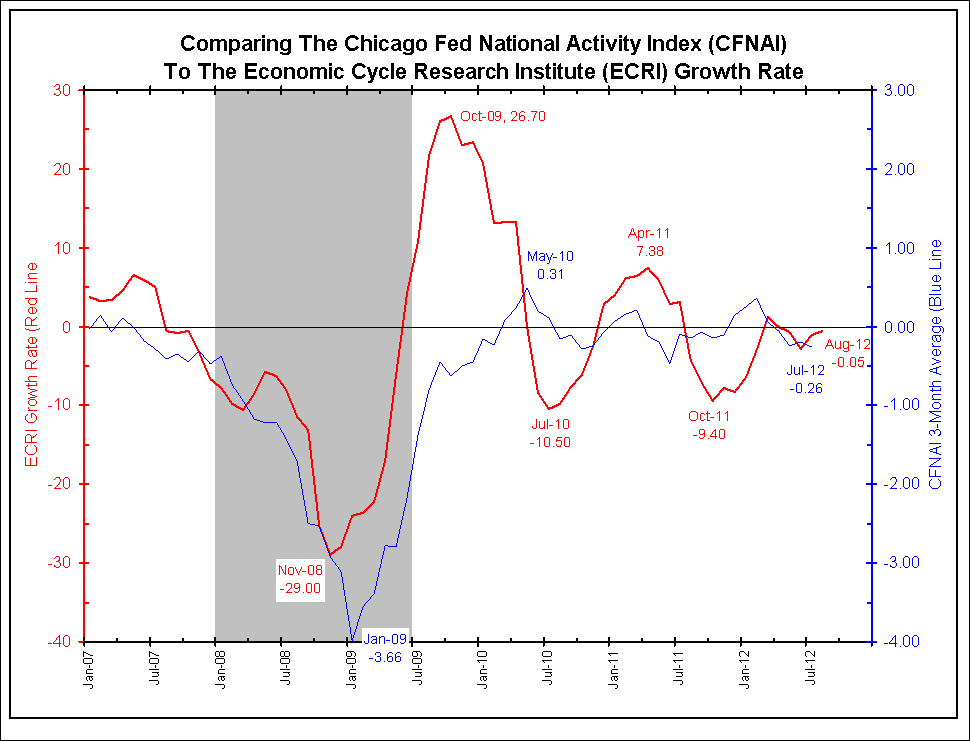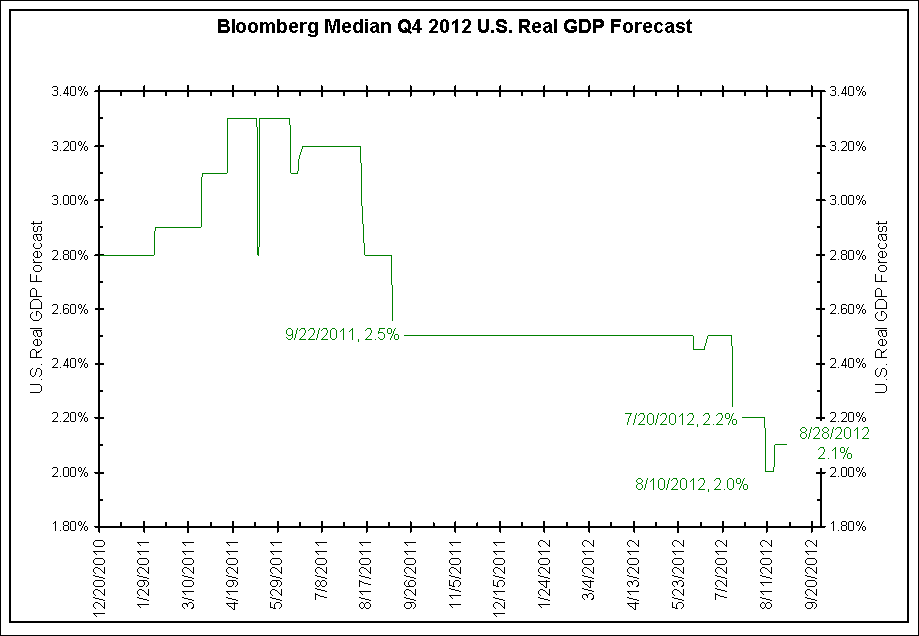Comment
The red line above is the ECRI leading index growth rate. It is a measure of where the economy is supposed to be going. The blue line is the Chicago Fed National Activity Index. It is a measure of where the economy is now.
Both measures are below zero. This means the economy is growing below potential, estimated to be around 2.5%. This is confirmed by the two charts below that show the consensus estimates expects growth of less than 2.5% for the rest of the year.
To describe this lackluster growth we have used the analogy of grades. Currently we give the economy a grade of a C- . It is not an F (recession) but a C- is nothing to get excited about. Like parents of school age children, we expect the economy to receive grades of A and B’s.
We are not yet in the recession camp but we are in the economy is “not good” camp. The not good camp is closer to recession than it is to the believing the economy is healthy.
Time.com – Is the U.S. Headed for a Double-Dip Recession?
In addition to a host of warnings, last Wednesday’s Congressional Budget Office report did contain a little bit of good news. The economy will grow slightly faster in the second half of 2012 than in the first half, and inflation will stay extremely low, according to projections in the CBO’s Update to the Budget and Economic Outlook. The bad news is that unemployment will probably remain above 8%. The worse news is that next year the U.S. faces continued high unemployment, below-average growth and the risk of a double-dip recession. The U.S. economy never built up much of a head of steam coming out of the 2007-09 recession, which saw the biggest drop in real GDP since the 1940s and the highest unemployment since the early 1980s. Historically, after such a major downturn ends, there’s typically a powerful rebound in which real GDP growth averages more than 4.5% annually over a period of two or three years and briefly hits annualized rates above 9%. By contrast, during the recovery that began in 2009, the economy has never grown faster than 4.5% and has averaged about 2.2% a year.And next year, the global economic situation figures to be even less hospitable to growth, which will make it harder for the U.S. economy to speed up from its current disappointing pace. Indeed, last week the ratings agency Standard & Poor’s released a report saying that the chances of a recession in the U.S. in 2013 had increased to 25%, up from 20% in February. A U.S. recession is by no means inevitable, but the domestic economy faces three large hurdles, any one of which could mean the difference between steady growth and another economic contraction.
Global Post – The US economy and the future of growth: well this is depressing
As Northwestern economist Robert Gordon points out in a new paper, these three interlocking events gave rise to a widespread assumption that “economic growth is a continuous process that will persist forever.” That’s because each of these industrial revolutions produced a virtuous economic circle.Each advance built upon the innovations of the previous ones, along the way boosting productivity and revving the American economy, which in turn made American consumers richer and more able to buy stuff. Well, guess what?Gordon writes that future growth in consumption per capita — the main engine of the consumer-based US economy — could fall below 0.5 percent a year for what he calls “an extended period of decades.”Yes, that would be a big deal. For some context, between 1860 and 2007 that annual growth rate was 1.9 percent. What’s driving this structural economic slowdown, according to Gordon?He argues that six “headwinds” are buffeting the US economy, and that these factors were in place even before the Great Recession of 2008.Count ‘em: 1) changing and unfavorable demographics, 2) rising education costs and poor secondary school performance, 3) growing economic inequality, 4) increased competition due to globalization, 5) energy and environmental costs and challenges, and 6) high levels of consumer and government debt.Taken together, these headwinds will slow growth dramatically into the foreseeable future.Here’s the money quote of Gordon’s paper, which is titled “Is U.S. Economic Growth Over? Faltering Innovation Confronts the Six Headwinds”:
Source: Bianco Research
For more information on this institutional research, please contact:
Max Konzelman
max.konzelman@arborresearch.com
800-606-1872





What's been said:
Discussions found on the web: